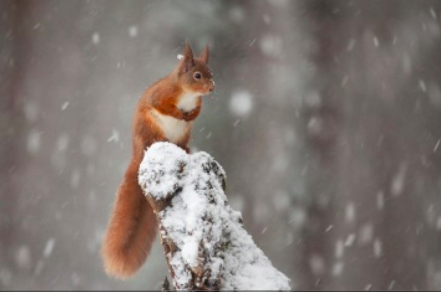 The extreme cold snaps we have experienced this winter may have you concerned for the wellbeing of birds and other animals exposed to this harsh weather. But as Marion Larson, education chief at the Massachusetts Division of Fisheries & Wildlife, assured Boston’s WBUR this month, New England animals have been coping with cold winters for thousands of years and have plenty of adaptions to keep warm.
The extreme cold snaps we have experienced this winter may have you concerned for the wellbeing of birds and other animals exposed to this harsh weather. But as Marion Larson, education chief at the Massachusetts Division of Fisheries & Wildlife, assured Boston’s WBUR this month, New England animals have been coping with cold winters for thousands of years and have plenty of adaptions to keep warm.
Songbirds, for example, fluff their feathers to trap body heat and create their own personal down coat. Ducks and geese also rely on down feathers near their skin, with an extra layer of oily, waterproof feathers on the outside to keep their skin dry — an adaptation similar to the oily fur that beavers and otters grow to keep their bodies dry in water.
Mammals that spend their winters tromping around in the snow, including deer and coyotes, stay warm by growing an extra-thick winter coat. This coat contains hollow hairs that trap heat like down feathers do on birds. Mammals also rely on fat reserves to keep themselves warm, and tend to move slower and less frequently in the winter to preserve these reserves.
To learn more about the fascinating ways animals stay warm in the winter, read WBUR’s Elizabeth Gillis’ story here.

 MAKE A GIFT
MAKE A GIFT SUBSCRIBE
SUBSCRIBE TRAIL MAPS
TRAIL MAPS CONTACT US
CONTACT US MEMBERSHIP
MEMBERSHIP